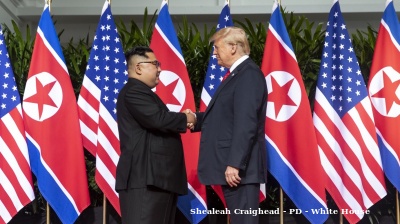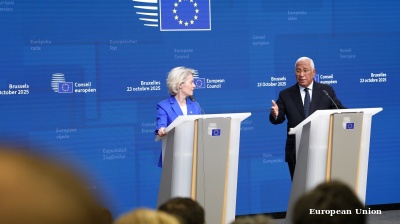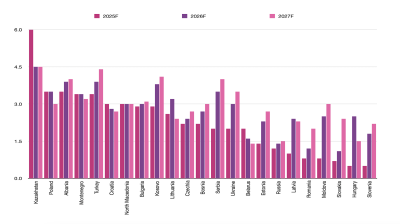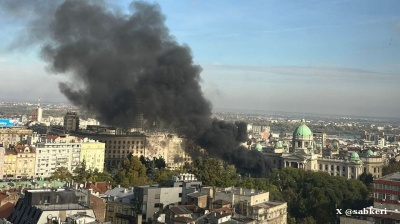The largest wind farm project in Serbia — and the Western Balkans region — will receive a €215mn loans from the European Bank for Reconstruction and Development and the International Finance Corporation (IFC), the EBRD said on October 17.
Despite the region’s potential and a recent fall in the costs of wind and solar technology, investment into renewables in the Western Balkans has been relatively low, and most money channeled into the sector has been for the already established hydropower sector. By contrast, wind and solar potential have barely been tapped, although this could change as governments seek to meet renewables targets set as part of their path to EU accession.
“The Čibuk wind farm is a breakthrough for Serbia as the country works to meet its commitment to produce 27% of domestic power needs from renewable energy sources by 2020,” said Harry Boyd-Carpenter, EBRD director of power and energy utilities.
“The EBRD has worked closely with the government to develop and refine the regulatory framework for the sector and these efforts have now unlocked job-generating foreign investment and the first wave of renewable-energy projects.”
The loans from the two international financial institutions will support the €300mn 158 MW Čibuk 1 wind farm, which is being developed by Vetroelektrane Balkana, owned by Tesla Wind which in turn is a joint venture between Abu Dhabi based renewable energy company Masdar and Čibuk Wind Holding, a subsidiary of US-based wind energy developer Continental Wind Partners.
To support the project, EBRD is providing a €107.7mn syndicated loan, of which €55mn is syndicated to Erste Bank, the Green for Growth Fund, UniCredit and Banca Intesa, alongside a €107.1mn loan from the IFC.
Čibuk 1 will have 57 wind turbines supplied by General Electric across an area of around 40 km2. It is expected to be connected to the grid in the first half of 2019, allowing it to supply power to an estimated 113,000 households, the EBRD said.
As well as cutting carbon dioxide emissions — a problem across the region — by more than 370,000 tonnes, the farm will also create 400 jobs in the area.
Tesla Wind chairman Yousif Al Ai called the wind farm “a pivotal moment for the expansion of renewables in the region”, while Masdar CEO Mohamed Al Ramahi said it highlighted “the attractiveness of the Serbian market for renewable energy investment”.
This is not the first wind farm to be developed in Serbia, but it is the largest. MK Fintel Wind, a joint venture between Serbian private conglomerate MK Group and Italian Fintel Energia Group, has built two two wind farms in the northern Serbian province of Vojvodina, started construction of a third in June.
Enlight Renewable Energies, a publicly listed Israeli renewable energy developer, has also announced plans for a €189mn wind farm in northern Serbia with financing from Erste Group Bank AG (supported by the German Export Credit Agency Euler-Hermes), Erste Bank Serbia, and the European Bank for Reconstruction and Development (EBRD).
These investors all want to harness Serbia’s wind energy potential, as identified by a January 2017 report from the International Renewable Energy Agency (IRENA). It says Serbia has additional cost-competitive potential for wind of up to 5.6 GW, noting, however, that “this can be realised only if a lower cost of capital is ensured”.
Like most of its neighbours, Serbia relies mainly on coal power generation, alongside mainly Yugoslavian era hydropower plants and some gas fired power stations.
Still, across Southeast Europe there is “vast technical renewable energy potential – equal to some 740 GW,” the IRENA report says. This includes overall technical potential of over 532 GW for wind energy, “the most abundant resource in the region”. As of end 2015, however, only 4.9 GW of wind generation capacity had been installed in the region, mostly in Bulgaria, Romania and Ukraine rather than the Western Balkans.
News

Trump would like to meet North Korea’s Kim Jong Un during Asia trip
The prospect of renewed diplomacy between Washington and Pyongyang has lingered since Kim’s remarks last month suggesting a willingness to speak to the outside world.

Bill Gates makes surprise Indian TV debut
In a move set to spark both intrigue and curiosity, Microsoft co-founder and philanthropist Bill Gates has made a cameo appearance on Indian television, entering the iconic drama series Kyunki Saas Bhi Kabhi Bahu Thi 2.

Queen Sirikit of Thailand dies
The death of Queen Sirikit of Thailand has marked the end of an era for the Thai monarchy. According to an official statement from the Bureau of the Royal Household of Thailand, Her Majesty died at 9.21 pm on October 24.

Pakistan, the latest in Asia to see gold prices plummet
In international trading, the precious metal lost $35 per ounce to settle around $4,115, extending a week-long slide triggered by shifting expectations over US monetary policy.
_1761305900.jpg)



